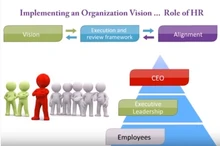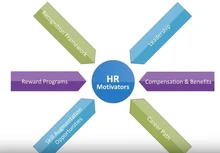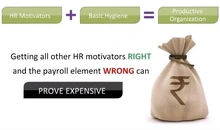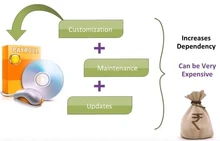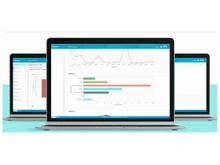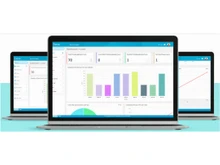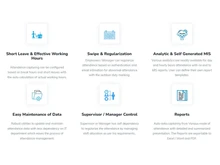Paysquare and Spine Payroll Software are well-known players in the payroll processing, offering robust solutions designed to streamline and automate payroll tasks for businesses.
Both software platforms share a common goal: to simplify payroll management and ensure compliance with statutory regulations.
However, they differ in key functionalities and user experiences. In this comparison, we’ll explore their strengths, weaknesses, and specific features to help you make an informed decision.
Paysquare vs Spine Payroll Software: An Overview
Paysquare is a payroll outsourcing service that handles all aspects of payroll processing. It is designed for businesses looking to completely outsource their payroll functions, from salary computations to compliance management. Paysquare provides a highly accurate, efficient, and scalable solution, making it a popular choice for organizations seeking to offload their payroll tasks to professionals.
On the other hand, Spine Payroll Software is an on-premise solution that empowers businesses to manage their payroll processes in-house. With a focus on flexibility and control, Spine offers advanced payroll features that allow organizations to handle salaries, statutory compliance, tax deductions, and employee benefits with ease. It is known for its comprehensive feature set, which is particularly suited for companies that prefer greater involvement in payroll management.
Between Paysquare and Spine Payroll, Paysquare excels in providing outsourced services, while Spine stands out for its powerful in-house payroll management capabilities.
Paysquare vs Spine Payroll Software: Pros & Cons
Paysquare Pros:
- Completely outsourced payroll services, relieving businesses from managing payroll in-house.
- Handles all statutory compliances and tax filings, ensuring businesses stay compliant.
- Scalable solutions are suitable for both small and large enterprises.
Paysquare Cons:
- Less control over payroll processing for companies that prefer in-house management.
- Dependence on third-party service for payroll operations.
Spine Payroll Pros:
- Comprehensive in-house payroll management with full control over salary computation and disbursement.
- Extensive features for statutory compliance, including Provident Fund (PF), Employee State Insurance (ESI), and Professional Tax (PT) management.
- Provides customizable payroll reports and dashboards for detailed analysis.
Spine Payroll Cons:
- Requires dedicated resources to manage and maintain the software.
- It has a steeper learning curve for users unfamiliar with payroll software.
Paysquare vs Spine Payroll Software: In Terms of Features
- Outsourcing vs. In-House: Paysquare is an outsourced payroll service, meaning businesses do not need to handle payroll operations internally. In contrast, Spine is an in-house solution, allowing companies to manage every aspect of payroll processing within their infrastructure.
- Compliance Management: Paysquare and Spine Payroll ensure compliance with statutory laws such as PF, ESI, and PT. However, while Paysquare manages these as part of its services, Spine provides tools for businesses to handle compliance on their own.
- Scalability: Paysquare is designed to scale effortlessly as your business grows, making it an ideal choice for companies expecting to expand. Spine Payroll, while also scalable, requires additional infrastructure and resources to scale effectively.
- Customization: Spine Payroll offers extensive customization options, allowing users to tailor salary structures, benefits, and reports to fit their specific needs. Paysquare, on the other hand, follows standard procedures with less customization flexibility due to its outsourcing model.
Paysquare vs Spine Payroll Software: User Friendliness
Since Paysquare is a managed service, there is minimal software usage required from the client’s end, making it very user-friendly for businesses that prefer not to engage with payroll software. On the contrary, Spine Payroll offers a comprehensive dashboard, but it may require some learning and training to get the best out of its advanced features.
Paysquare vs Spine Payroll Software: Performance
Paysquare performance is not dependent on internal resources since all payroll functions are handled externally. This results in a smooth and efficient experience for clients, with minimal resource usage on the client’s part. However, the performance of Spine Payroll is largely dependent on the infrastructure it is installed on. With the right hardware and configuration, Spine Payroll delivers excellent performance in handling payroll tasks and generating reports.
Paysquare vs Spine Payroll Software: Updates
Paysquare stays updated with all the latest statutory requirements, ensuring compliance with ever-changing labour laws and tax regulations. On the other hand, Spine releases regular updates to enhance features and stay compliant with regulatory changes. However, since it is an on-premise solution, businesses must ensure timely updates are applied.
Which is Better, Paysquare or Spine Payroll Software?
Paysquare is an excellent choice for businesses looking for a hassle-free, outsourced payroll solution. It takes away the burden of payroll management, allowing businesses to focus on their core functions while ensuring accurate payroll and compliance.
On the other hand, Spine Payroll is ideal for businesses that prefer in-house control over payroll management. Its rich feature set, customizable reports, and strong compliance capabilities make it a powerful tool for managing payroll internally.
The decision between Paysquare and Spine Payroll Software ultimately depends on your company’s preference for outsourcing or in-house payroll management.


 15 Ratings & 15 Reviews
15 Ratings & 15 Reviews


